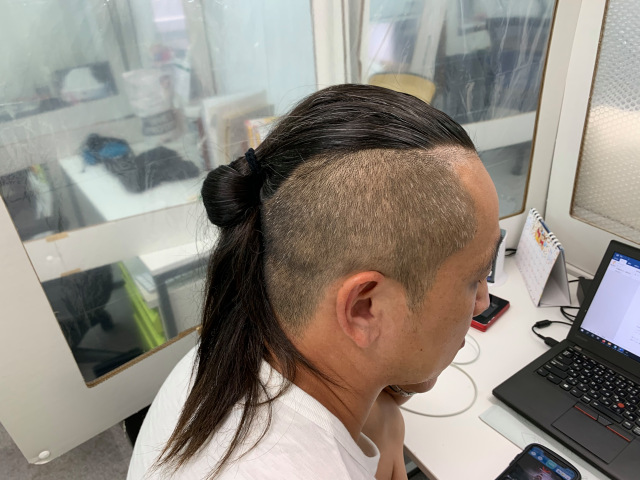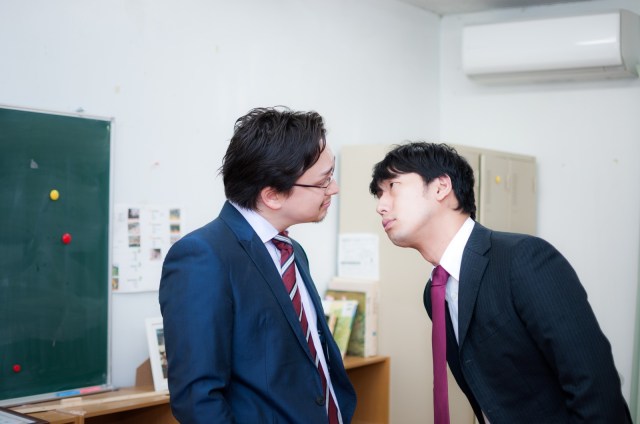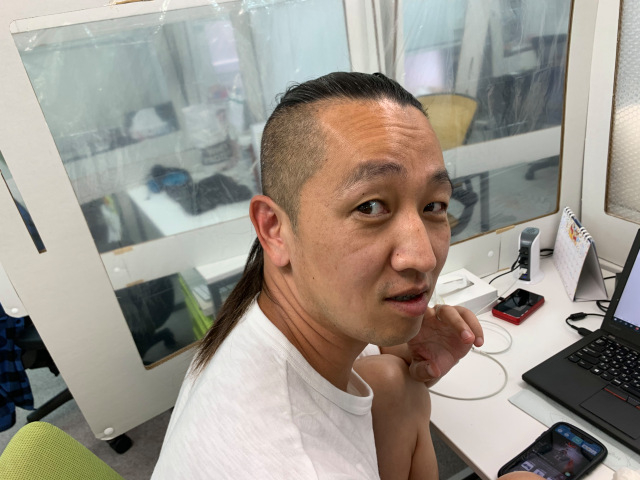
Tokyo Metropolitan Board of Education continues mental gymnastics and insists that undercuts cause harmful incidents and accidents.
School dress codes are universally reviled by students, whether it’s forbidding the exposure of one’s shoulders or even banning tights during cold, wintry months. Besides clothes, in Japan it’s not unusual for hairstyles to be strictly monitored too—no dyed hair, no hair growing past a certain length, and in the case of the Tokyo Metropolitan Board of Education, no two block hairstyles. A two block hairstyle is essentially an undercut on both sides of the head, popular among young male actors and music stars.
This week, Tokyo Metropolitan Assemblyman and Japanese Communist Party member Yuichi Ikegawa posted a video clip from a meeting in which he asked the reason for the two block hairstyle ban, but received an answer even more perplexing than the actual ban itself. In the video, which can be seen here, Ikegawa was told by Tokyo Metropolitan Board of Education head Yuji Fujita:
“In regards to the hairstyle you mention…there are cases of students being involved in incidents or getting into accidents as a result of their appearance, and so the rule is something that has been put in place with the objective of protecting the students.”
▼ Going off the Tokyo Metropolitan Board of Education’s logic, you can get into a physical fight if you have an undercut, but any other hairstyle only prompts a seething, contactless stare-off.
The term for incident in Japanese, “jiken,” has connotations of physical altercations or run-ins with the law—all things that educators understandably don’t want their students to be associated with. However, it’s a bit of a reach to say that a haircut will jump-start a fight, and so Ikegawa asked for, but never got, data showing that kids with two block hairstyles have a higher chance of getting into trouble.
An undercut itself seems harmless, but admittedly the cut is part of more flashy hairstyles such as mohawks and pompadours—both which are associated with delinquency in Japan. Though what one considers delinquent is subjective to the individual, so what better way to assess the actual realities of having this haircut than asking someone who’s had it for five years? And so our reporter Seiji Nakazawa decided it was best to ask his coworker P.K. Sanjun, who has been rocking his two block hairstyle for quite a while.

Seiji: So how long have you had this hairstyle for?
P.K.: It’s been about 5 years.
Seiji: Any reason why you decided to get a two block hairstyle?
P.K.: I guess if I have to have a reason, I thought it was a simple but pretty sick-looking hairstyle. It’s also really easy to upkeep; I only have to head to the barber once every two weeks for a 1,000-yen cut. (US$9.30) Oh, not to mention it’s pretty easy to wash too!
Seiji: I see! There’s really no inconveniences to be had if it’s a cut that can be maintained with 1,000 yen. By the way, ever encounter… say, any nasty incidents just by having this haircut?
▼ An understandable, candid raise of the brow from P.K.
P.K.: Not at all. I mean, in the past five years maybe some stuff has happened, and I’ve had run-ins, but I never really thought of my haircut as the main reason.
Seiji: Gotcha! Thanks for your time for today’s interview.
So who would’ve known? Maybe it isn’t about your physical appearance. None the less, in the Tokyo Metropolitan Assembly’s published minutes from the meeting in which Ikegawa posed his question, Fujita is quoted as saying:
“School rules have only one objective and that is to maintain community standards. Even though some schools within the city don’t have fully outlined rules, at the bare minimum there are stipulations written such as rules to wear only indoor shoes at school.
While whether or not one’s physical appearance causes one to become involved with incidents or accidents is dependent on the location, and that all students are responsible for their own interactions with fellow students, please understand we set these rules as a necessity.”
So despite Ikegawa’s sharp line of questioning and P.K.’s example of upstanding citizenship, it seems that students won’t be able to rock undercuts at public schools anytime soon. At the very least, however, let’s hope there are no other insane curveball rules such as this one school which mandated their students to participate in cult-like prostration sessions in front of teachers.
Reference: Tokyo Metropolitan Assembly
Top image: SoraNews24
Insert images: Pakutaso, SoraNews24
● Want to hear about SoraNews24’s latest articles as soon as they’re published? Follow us on Facebook and Twitter!
[ Read in Japanese ]


 Head of Tokyo board of education gets asked about dumb school hairstyle rule, gives dumb answer
Head of Tokyo board of education gets asked about dumb school hairstyle rule, gives dumb answer All Tokyo public high schools abolish rules forcing students to dye non-black hair, underwear color regs
All Tokyo public high schools abolish rules forcing students to dye non-black hair, underwear color regs What happens when our reporters show up to work dressed like their fathers?
What happens when our reporters show up to work dressed like their fathers? The AI ’90s yearbook trend hits our office, with hilarious results 【Photos】
The AI ’90s yearbook trend hits our office, with hilarious results 【Photos】 Japanese beef bowl chain Sukiya’s 2026 Smile Box lucky bag basically pays for itself
Japanese beef bowl chain Sukiya’s 2026 Smile Box lucky bag basically pays for itself What did Shibuya really look like after the crowds on New Year’s Day?
What did Shibuya really look like after the crowds on New Year’s Day? 7 great places to see Mt. Fuji from without having to climb it
7 great places to see Mt. Fuji from without having to climb it Japanese airlines offer discounted fares to international tourists
Japanese airlines offer discounted fares to international tourists Japan Airlines is giving away free domestic flights to international tourists
Japan Airlines is giving away free domestic flights to international tourists “Deflowering” services for virgin women are now a thing in Japan, apparently
“Deflowering” services for virgin women are now a thing in Japan, apparently We go behind the scenes at Japan Airlines’ in-flight meal factory【Photos】
We go behind the scenes at Japan Airlines’ in-flight meal factory【Photos】 Haunted hospital near Mt Fuji re-opens after renovation at Fuji-Q Highland, and it’s terrifying
Haunted hospital near Mt Fuji re-opens after renovation at Fuji-Q Highland, and it’s terrifying Daiso unveils new official mascot, Daizo the elephant
Daiso unveils new official mascot, Daizo the elephant Shimane’s hidden travel sites, where you can escape the crowds and enjoy traditional Japan
Shimane’s hidden travel sites, where you can escape the crowds and enjoy traditional Japan Starbucks Japan ready to get Year of the Horse started with adorable drinkware and plushies【Pics】
Starbucks Japan ready to get Year of the Horse started with adorable drinkware and plushies【Pics】 Cyberpunk anime meets traditional culture in Ghost in the Shell gold leaf Japanese changing screens
Cyberpunk anime meets traditional culture in Ghost in the Shell gold leaf Japanese changing screens Hayao Miyazaki says Happy New Year to Studio Ghibli fans with new art for Year of the Horse
Hayao Miyazaki says Happy New Year to Studio Ghibli fans with new art for Year of the Horse Hello Kitty Choco Egg figures are an adorable trip through three periods of Japanese pop culture【Pics】
Hello Kitty Choco Egg figures are an adorable trip through three periods of Japanese pop culture【Pics】 We found possibly the quietest Japanese-style hotel in Tokyo’s bustling Shinjuku district
We found possibly the quietest Japanese-style hotel in Tokyo’s bustling Shinjuku district 7-Eleven Japan’s ramen-cooking robot whipped us up a bowl of noodles【Taste test】
7-Eleven Japan’s ramen-cooking robot whipped us up a bowl of noodles【Taste test】 Sumo Sanrio! Hello Kitty and pals team up with Japan Sumo Association for new merch【Pics】
Sumo Sanrio! Hello Kitty and pals team up with Japan Sumo Association for new merch【Pics】 Japan’s oldest largetooth sawfish in captivity back on display in Mie Prefecture
Japan’s oldest largetooth sawfish in captivity back on display in Mie Prefecture More Than a Capsule Stay: Why Solo Travelers Choose “global cabin Yokohama Chinatown”
More Than a Capsule Stay: Why Solo Travelers Choose “global cabin Yokohama Chinatown” 7-Eleven Japan starts new temporary luggage storage service in over 300 branches
7-Eleven Japan starts new temporary luggage storage service in over 300 branches Disillusionment at Tsukiji’s tourist-target prices led us to a great ramen restaurant in Tokyo
Disillusionment at Tsukiji’s tourist-target prices led us to a great ramen restaurant in Tokyo Starbucks teams up with 166-year-old Kyoto doll maker for Year of the Horse decorations【Photos】
Starbucks teams up with 166-year-old Kyoto doll maker for Year of the Horse decorations【Photos】 Tokyo considering law requiring more trash cans following litter increase in heavily touristed area
Tokyo considering law requiring more trash cans following litter increase in heavily touristed area Tokyo’s Tsukiji sushi neighborhood asks tour groups to stay away for the rest of the month
Tokyo’s Tsukiji sushi neighborhood asks tour groups to stay away for the rest of the month Tokyo event lets you travel back in time, for free, to celebrate 100 years since Showa era start
Tokyo event lets you travel back in time, for free, to celebrate 100 years since Showa era start Sanrio theme park in Japan announces plans to expand into a Sanrio resort
Sanrio theme park in Japan announces plans to expand into a Sanrio resort Japan may add Japanese language proficiency, lifestyle classes to permanent foreign resident requirements
Japan may add Japanese language proficiency, lifestyle classes to permanent foreign resident requirements Stamina-destroying “Paralysis Noodles” are Tokyo’s newest over-the-top ramen innovation
Stamina-destroying “Paralysis Noodles” are Tokyo’s newest over-the-top ramen innovation Survey asks foreign tourists what bothered them in Japan, more than half gave same answer
Survey asks foreign tourists what bothered them in Japan, more than half gave same answer Japan’s human washing machines will go on sale to general public, demos to be held in Tokyo
Japan’s human washing machines will go on sale to general public, demos to be held in Tokyo Japan’s deadliest food claims more victims, but why do people keep eating it for New Year’s?
Japan’s deadliest food claims more victims, but why do people keep eating it for New Year’s? We deeply regret going into this tunnel on our walk in the mountains of Japan
We deeply regret going into this tunnel on our walk in the mountains of Japan Studio Ghibli releases Kodama forest spirits from Princess Mononoke to light up your home
Studio Ghibli releases Kodama forest spirits from Princess Mononoke to light up your home Major Japanese hotel chain says reservations via overseas booking sites may not be valid
Major Japanese hotel chain says reservations via overseas booking sites may not be valid Put sesame oil in your coffee? Japanese maker says it’s the best way to start your day【Taste test】
Put sesame oil in your coffee? Japanese maker says it’s the best way to start your day【Taste test】 No more using real katana for tourism activities, Japan’s National Police Agency says
No more using real katana for tourism activities, Japan’s National Police Agency says Starbucks Japan reveals new sakura drinkware collection, inspired by evening cherry blossoms
Starbucks Japan reveals new sakura drinkware collection, inspired by evening cherry blossoms Updated cherry blossom forecast shows extra-long sakura season for Japan this year
Updated cherry blossom forecast shows extra-long sakura season for Japan this year
Leave a Reply